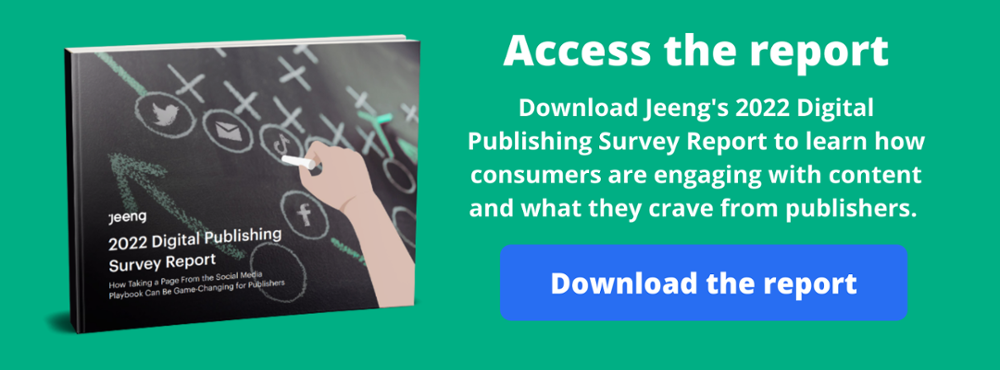Email remains a trusted channel where people turn to for updates and communication. As a backbone in the digital experience, publishers want their audiences swooning over their emails. But the inbox is the competitive space, so how can publishers get the love they deserve from their subscribers, this Valentine’s Day?
Through email personalization.
Email personalization provides a better connection to subscribers. It displays dedication to the customer experience by paying attention to their interests, wishes, and previous behaviors. All of this is the foundation for more revenue and maximized engagement.
Email personalization is a must-have for publishers to stand out among the inbox clutter.

There are three main types of data publishers can use to build impactful personalized email messaging:
- Demographics, like a user’s age, location, or job
- Behaviors, based on a user’s interests, preferred content types, and subjects, and frequently visited channels
- Direct feedback from surveys, website forms, or calls.
A recent McKinsey & Company report found that 71% of consumers expect personalization from companies. Moreover, three-quarters of users get frustrated when they receive messages that aren’t personalized. They also noted that personalized marketing gives companies 40% more revenue at a quicker rate than standard messaging.
Publishers and advertisers need to have a decent grasp of their audiences so they can present themselves in a way that keeps them relevant. To make your audience love you, you gotta give ‘em what they want!
Here are the top five best practices to ace email personalization and win over your readers’ hearts forever:
1. Send emails at the right time
Landing in someone’s inbox at the right time is crucial for your emails to be read. Your message will get lost in the clutter (or trash!) if you’re sending it in the middle of the night or over a weekend. Stand out and shine by sending each email at the perfect time for each individual subscriber.
That means taking into account time zones, one-time holidays or special occasions, etc., and scheduling email campaigns at optimal times.
2. Deliver 100% relevant content
Your content should be on point for each person’s unique interests and preferences. Knowing what your audience desires is how to capture potential customers.
Findings from Jeeng’s 2022 Digital Publishing Consumer Survey indicate that most users are begging for personalized content. More than half of the survey respondents say they want emails personalized based on their behaviors, preferences, etc., which is a 21% increase from last year. Plus, nearly 1 in 4 millennials and Gen Zs say they read an email newsletter because the content feels like it was written just for them.

Knowing what they like, and how they like to get their information will make or break your relationship with your readers.
3. Include advertisements that match each person’s interests.
Sponsored content makes for the perfect opportunity to catch a reader’s interest. Utilizing ad placements to further personalize the messages a user receives in their inbox can drive revenue and keep customers engaged. According to Jeeng’s 2022 Digital Publishing Consumer Survey, while the number of users who pay for email subscriptions has doubled over the last year, publishers can implement a hybrid revenue model that combines paid email subscriptions with ad-supported emails.

Make your readers feel seen and understood this Valentine’s Day with personalized ads promoting something relevant to them.
4. Use first-party data to segment your audiences
Capture potential customers by harnessing first-party data. This gives you a clear picture of what your customers want and allows you to build unique audience segments based on user behavior and interests.
With control over the data that publishers and advertisers have collected directly, you can further implement targeted personalization and reach your exact audiences.
5. Use AI to automate distribution
Using AI to automatically send highly targeted emails is the icing on the cake. Artificial intelligence and machine learning can simplify email personalization by saving time and resources. The algorithm automatically seeks opportunities to drive engagement and revenue by scanning customer data and curating personalized content for each user.
With a few simple clicks, using AI to optimize your email personalization is like the bow that wraps together all of the email personalization best practices into the most splendid Valentine’s Day gift for your subscribers.
Happy Valentine’s Day!
Need help launching your first personalized email marketing campaign? Contact Jeeng to get started.
Download Jeeng’s 2022 Consumer Survey Report to learn more about the trends impact the publishing industry.


